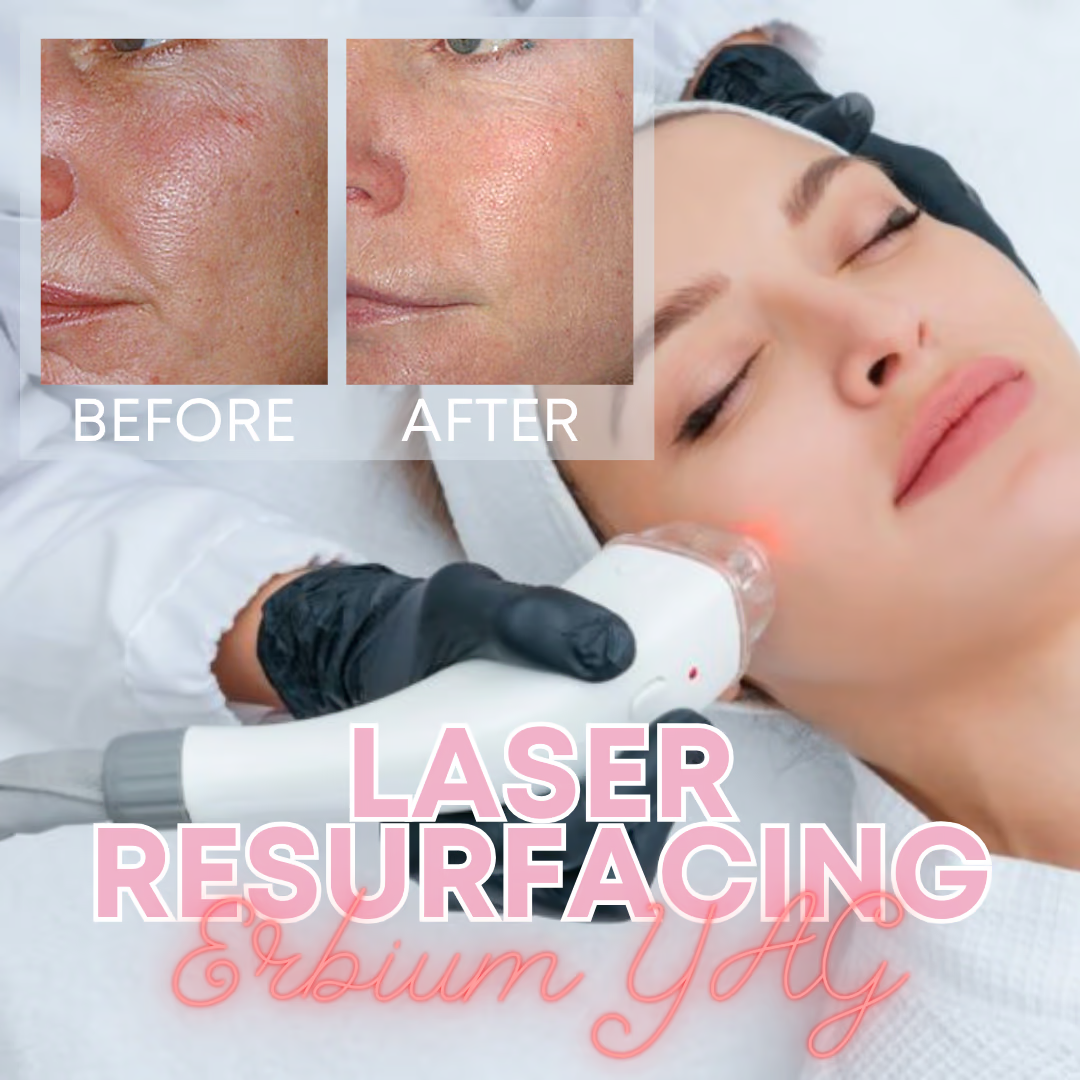Erbium Yag Laser Resurfacing
The Erbium Yag laser uses a less invasive approach for treating superficial wrinkles and sun-damaged skin. Technicians use an Erbium Yag laser to remove fine lines and pigmented lesions, treating superficial wrinkles and sun damage. This method offers a less invasive alternative to treat mild to moderate skin wrinkling and dyschromia on the neck, chest, hands, and face.
$399.00 – $875.00
Prefer a Payment Plan?
Get Pre-Approved with No Hard Credit Checks!
Deposits: Lock-in special pricing for 6 months (one treatment, one time). All deposits are nonrefundable but will be credited towards your account towards any service. All procedures require an in-person consultation and candidacy verification prior to treatment.
Note: All of our products & services are only available for pickup at our Honolulu location. We do not ship products or offer off-site services. If you are off-island we will credit it to your account for next time you are in town.
Learn All About
Erbium Yag Laser Resurfacing
Skin Resurfacing: The treatment of choice is Erbium for those wanting to achieve dramatic improvement in their skin appearance with minimal downtime. In fact, the procedure removes surface pigmentation and mild to moderate fine lines and wrinkles on different body parts, such as the face, hands, neck, and chest.
Many patients experience adverse aesthetic changes on the skin due to factors such as aging, sun damage, and hormonal changes. Indeed, laser skin resurfacing is an effective treatment for reducing and removing wrinkles, scars, pigmentation, and other skin imperfections.
The Spectrum Laser device has an Erbium Yag Laser handpiece specifically designed to address this problem in specific areas. One of the best things about the Erbium Yag treatment is that it offers minimal downtime and achieves impressive results for mild to moderate skin wrinkling and discoloration.
The treatment involves minimal downtime and delivers great results for mild to moderate skin wrinkling and dyschromia. Please schedule a consultation with one of our providers to discuss how Laser Skin Resurfacing can benefit you!
Benefits Of Skin Resurfacing
-
Acne scar, brown/dark spots removal
-
Superficial wrinkle improvement .
-
Dyschromia improvement
In cutaneous laser resurfacing, lasers target water-containing tissue for controlled vaporization, leading to collagen shrinkage and remodeling. Various lasers are used, including high-energy pulsed carbon dioxide, short-pulsed Er:YAG, and modulated Er:YAG systems.
The carbon dioxide laser, though effective, may have longer healing times and cause prolonged redness, with a risk of permanent lightening. The Er:YAG laser was developed to address these issues, operating at a skin-friendly wavelength, removing less tissue per pass for faster healing.
Initial excitement for the short-pulsed Er:YAG laser waned due to poor hemostasis and less impressive tissue tightening than the carbon dioxide laser. Modulated Er:YAG systems were introduced to overcome these issues, aiming for deeper tissue ablation and improved collagen remodeling.
Fractional photothermolysis, introduced in 2004, revolutionized laser resurfacing by creating columns of thermal injury below the skin’s surface, allowing rapid healing without oozing. Multiple sessions are often needed for conditions like photodamage and atrophic scarring, proving effective for facial rejuvenation.
Ablative fractional resurfacing with carbon dioxide or 2940-nm Er:YAG lasers have shown good outcomes with shorter recovery times and fewer adverse effects than traditional ablative laser resurfacing.
Read more about both types of laser treatments in our article.





